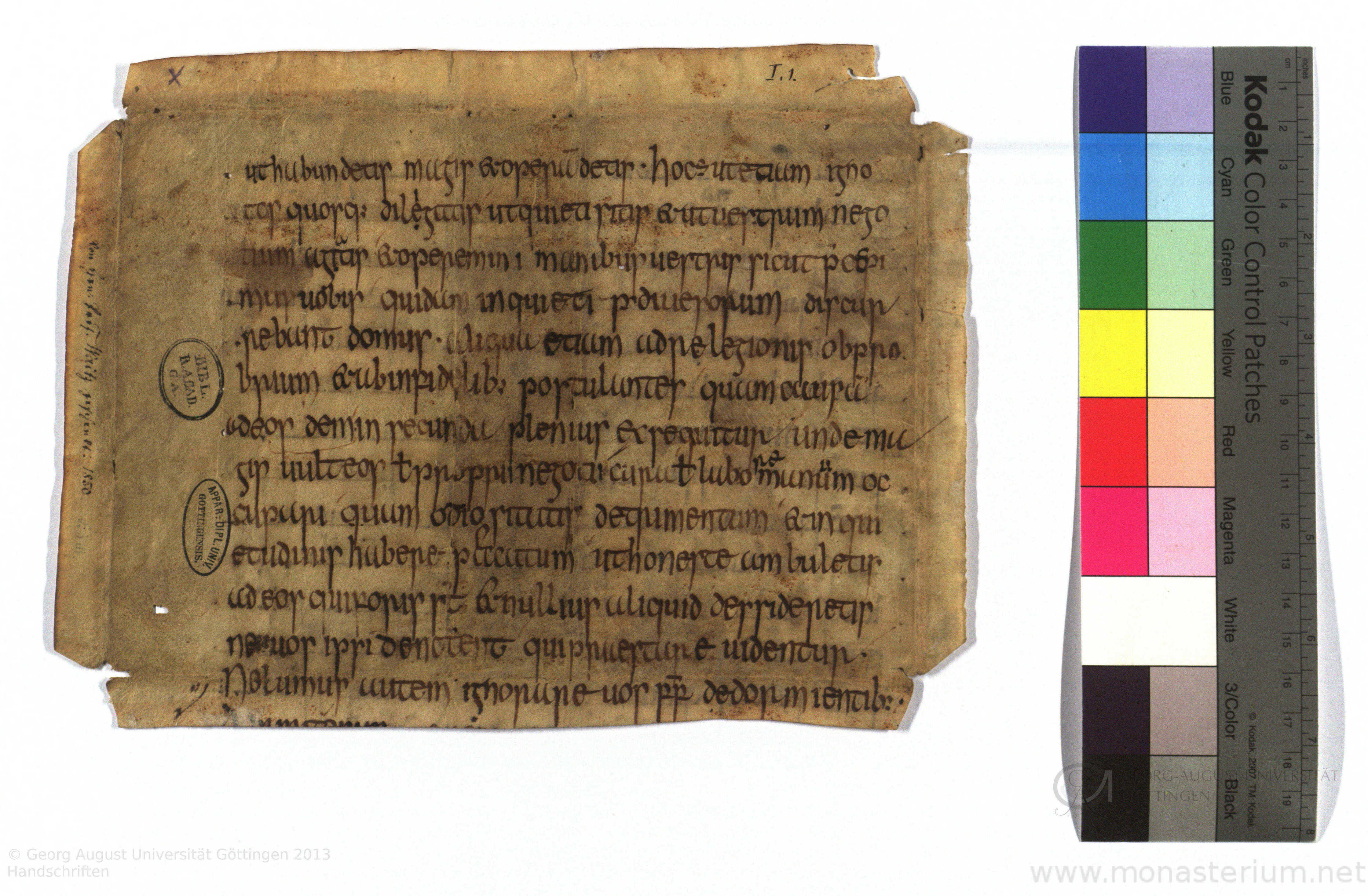Charter: Apparatus diplomaticus - 10E - Handschriftenfragmente App. dipl. 10 E I 1
Signature: App. dipl. 10 E I 1
Add bookmark
Edit charter (old editor)
VIII. / IX. Jahrh., Maingegend oder Hessen
Pelagius, Expositio XIII epistularum Pauli (1. Thess 4) Current repository:
Mappe I: Handschriftenfragmente, VIII.-XI. Jahrh., 29 Nummern (nach Meyer: 27 Stücke).
Mappe I: Handschriftenfragmente, VIII.-XI. Jahrh., 29 Nummern (nach Meyer: 27 Stücke).


Bibliography:
- Wilhelm Meyer, Die Handschriften in Göttingen, Bd. 3: Universitäts-Bibliothek. Nachlässe von Gelehrten – Orientalische Handschriften - Handschriften im Besitz von Instituten und Behörden - Register (Verzeichniss der Handschriften im Preußischen Staate I,3), Berlin 1894, S. 504.
- Bernhard Bischoff, Katalog der festländischen Handschriften des neunten Jahrhunderts (mit Ausnahme der wisigotischen), Teil 1, Wiesbaden 1998, S. 294.
- Elias Avery Lowe, Codices Latini antiquiores, Bd. 8: Germany: Altenburg-Leipzig, Oxford 1959, Nr. 1203.
Comment
Für den Text s. außerdem A. Souter, Pelagius’s Expositions of Thirteen Epistles of St. Paul 2: Text, Cambridge 1926, S. 430,5-431,2 und 431,10-432,4. Vermutlich liegt die sog. „pseudo-hieronymianische Rezension“ des Paulus-Kommentars vor (nach Lukas Dorfbauer). Es handelt sich um eine "sehr schmale angelsächsische Minuskel mit langen spitzen Unterlängen" (Bischoff). Winfried Rudolf zufolge ist die gehörnte nota antiqua für ‘per’ in ‘per divesorum (sic)’ auf fol. a/4 eher insular gebräuchlich.Places
- Maingegend oder Hessen
Persons
- Pelagius
Göttingen, Diplomatischer Apparat der Georg-August-Universität, Apparatus diplomaticus - 10E - Handschriftenfragmente App. dipl. 10 E I 1, in: Monasterium.net, URL </mom/DE-GAUnivGoet/AppDipl10E/App_dipl_10_E_I_1/charter>, accessed at 2024-12-22+01:00
You are copying a text frominto your own collection. Please be aware that reusing it might infringe intellectural property rights, so please check individual licences and cite the source of your information when you publish your data
The Charter already exists in the choosen Collection
Please wait copying Charter, dialog will close at success